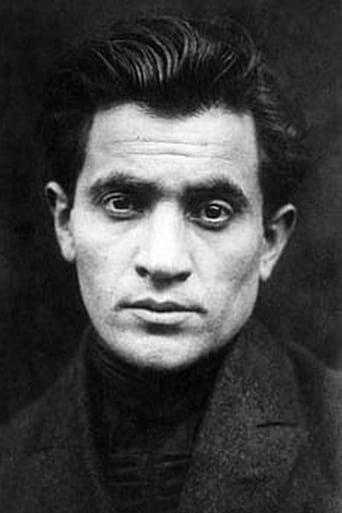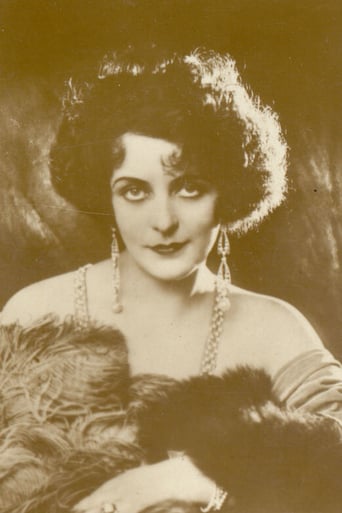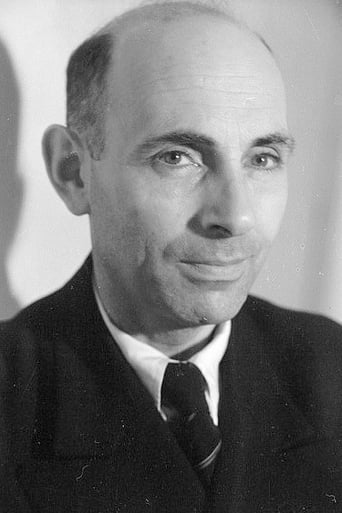Claysaba
Excellent, Without a doubt!!
CommentsXp
Best movie ever!
Zandra
The movie turns out to be a little better than the average. Starting from a romantic formula often seen in the cinema, it ends in the most predictable (and somewhat bland) way.
Dana
An old-fashioned movie made with new-fashioned finesse.
chaos-rampant
I shudder to think what might have been of the German school if Caligari and Nosferatu had been among the lost films. There's just not a whole lot that has reached us from this movement, much less truly great works. Recently restored by the Murnau foundation, this is meant to be one of the most evocative ones, a great title we had been missing. Most of it passes with little notice, a night of erotic angst, rivalry and a marriage falling apart with the lavish mansion of a baron as the stage of the theater. The prospective lovers feign and thrust, eventually really thrust; we get to see this in shadows. Shadows, a nocturnal hallucination as the title goes. It's the arrival of a shadow-player that is the most intriguing here. Oh, eventually his magick tricks were all serving a benign purpose, domestic bliss is salvaged from desire most foul, the soul restored into proper order.The trick is that he gives the parties involved a vision of what might unfold, the dangers involved. His small audience wakes up from the cinematic illusion dazzled, baffled, rubbing their eyes with disbelief. And we pull further back in the final shot to see curtains falling on this level that we experienced as reality.Is everything inside the nested story so artificial because it was the times still inflected by theater, or because the shadow play is inherently artificial? Is the shadow player the protagonist himself, made from his mirrored image, and so conjuring for himself a wish-fulfillment illusion where everything is made alright?If you were looking to come to this for German expressionism, you might want to reconsider. There is a great shot of the illusionist pushing back, elongating the shadows of his players. But it's serving and is part of the great self-referential tradition of cinema, films about the illusion of watching films.
tom-3129
For further reading I recommend an excellent article on the film in the film magazine 'Traffic' (nb. 33) by the German movie aficionado Enno Patalas. Patalas was also the driving force behind a complete restoration of the film at the Munich Filmmuseum - surprisingly there are some (hand- )colored sections in the original version. The shadow theater puppets shown in the movie were created by the German expressionist artist Ernst Moritz Engert, who was well connected to the early expressionist art- and literature-scene in Berlin and Munich. I adore the movie for exploring the deep aesthetic relations between the art of the shadow play and movie as an art itself - from my point of view the earliest and most reflected approach to provide a genuine philosophical statement on film.
movingpicturegal
This is an unusual, very different sort of film, completely visual as it has no intertitles, in keeping with the original German version. About a man who is full of anxiety (his eyes continually popping out in jealous rages) over the attentions his woman has been paying to a handsome youth and several other male admirers (meanwhile, though she likes to flirt, she actually seems more interested in gazing at herself and posing in front of mirrors). The action all takes place at a house dinner party one evening, where our beautiful and alluring peacock lady is busy enticing the man, the youth, and three gentlemen, then all are "entertained" by a strange traveling entertainer and his shadow puppet play, who causes all to hallucinate a vision of "things to come".This film is very interestingly photographed, full of sharp shadows against brightly lit walls that set some of the action, plus lavish period costuming and well-draped sets that look like they belong on a stage. The action is mostly slow and dreamlike, a bit too slow at times as this drags just a little through parts. Still, very interesting to see. The print on the DVD, tinted in sepia/yellow, pink, and bright lavender tones, looks quite nice. The music score is excellent and suits this very odd silent film quite well.
psteier
One of the most influential of the German Expressionist films of the 1920's. The most radical aspect is the lighting, where the shadows are sometimes more important than the actors. Also unusual is that there are no titles except at the start to introduce the characters, who are just types and do not have names, just descriptive titles (husband, wife, youth, servant, etc.). The shadow puppet show is similar to what is seen more extensively in Abenteuer des Prinzen Achmed, Die (1925).




